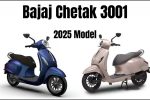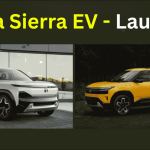
Tata Motors is set to make a bold statement in India’s electric vehicle market with the revival of one of its most beloved nameplates – the Sierra. In a strategic move that underscores the company’s commitment to electric mobility, the Sierra EV will launch before its internal combustion engine counterpart, marking a paradigm shift in how legacy automotive brands approach modern vehicle development.
The production-ready Sierra made its debut at the BMGE 2025 exhibition in New Delhi, generating significant buzz among automotive enthusiasts and industry experts. This launch strategy represents Tata’s evolved approach to vehicle development, prioritizing electric variants to align with India’s growing sustainable mobility demands and government initiatives promoting clean transportation.
Design Philosophy: Heritage Meets Future
The new-generation Sierra successfully bridges the gap between nostalgia and innovation. While maintaining the distinctive design DNA of its predecessor, the modern Sierra incorporates contemporary styling elements that appeal to today’s SUV buyers. The signature floating roofline concept has been enhanced with a panoramic sunroof, creating impressive visual continuity that sets it apart from conventional SUVs.
Bold character lines and muscular wheel arches give the Sierra a commanding road presence, while the blacked-out roof treatment creates a striking two-tone appearance that emphasizes its premium positioning. Large alloy wheels and pronounced shoulder lines contribute to the vehicle’s assertive stance, complemented by modern LED lighting elements that provide both functionality and visual appeal.
Electric Powertrain Excellence
The Sierra EV is expected to offer dual battery pack options, providing flexibility for different customer needs and budgets. The larger battery configuration is anticipated to deliver over 500 kilometers of range on a single charge, addressing one of the primary concerns of potential electric vehicle buyers – range anxiety.
Advanced charging capabilities, including DC fast charging, will enable rapid battery replenishment, making long-distance travel practical and convenient. What sets the Sierra EV apart from conventional vehicles is its Vehicle-to-Load (V2L) and Vehicle-to-Vehicle (V2V) capabilities, positioning it as more than just transportation by enabling it to serve as a mobile power source for various applications.
Specification Comparison
| Variant | Sierra EV | Sierra ICE (Expected) |
|---|---|---|
| Powertrain | Electric motor(s) | 1.5L turbo petrol / 2.0L diesel |
| Power Output | TBD | 168 PS / 170 PS |
| Torque | TBD | 280 Nm / 350 Nm |
| Range/Efficiency | 500+ km | TBD |
| Transmission | Single-speed | 6MT/6AT/7DCT |
| Charging | DC fast charging | N/A |
| Special Features | V2L, V2V capability | Traditional features |
Technology Integration
The Sierra is expected to debut Tata’s first triple-screen layout, featuring a large touchscreen infotainment system, fully digital instrument cluster, and dedicated passenger display. This configuration will establish new benchmarks for in-cabin technology within Tata’s lineup.
Connectivity features will include smartphone integration, over-the-air updates, and advanced navigation systems optimized for electric vehicle usage, including charging station location and route planning. The infotainment system will likely incorporate Tata’s latest software platform with enhanced user interface design and improved response times.
Comfort and Convenience Features
| Feature Category | Expected Equipment | Benefit |
|---|---|---|
| Climate Control | Automatic dual-zone | Enhanced comfort |
| Seating | Ventilated front seats | Premium experience |
| Charging | Wireless charging pad | Convenience |
| Audio | Premium sound system | Entertainment |
| Safety | Multiple airbags, ADAS | Enhanced protection |
| Lighting | LED headlamps, DRL | Better visibility |
| Roof | Panoramic sunroof | Airy cabin feel |
Market Positioning and Pricing Strategy
The Sierra EV will compete in the premium electric SUV segment, positioning itself against established players like the MG ZS EV and Hyundai Kona Electric. Pricing is expected to be competitive within the electric SUV category, potentially starting around ₹25-30 lakh for the base variant, making it accessible to a broader customer base.
Government incentives and subsidies for electric vehicles will help reduce the effective purchase price, improving the value proposition for potential customers. The ICE variants, when they arrive, may be priced more affordably, providing entry-level access to the Sierra nameplate.
Production Timeline and Market Impact
The launch timeline indicates the Sierra EV will arrive before the end of the current financial year, with initial production focusing on major metropolitan markets where charging infrastructure is more developed. A gradual rollout to tier-2 and tier-3 cities will follow as charging networks expand.
The Sierra’s unique positioning as a revived iconic nameplate with modern electric technology creates distinctive market appeal that competitors may find difficult to replicate. Success of the Sierra could encourage other manufacturers to revive their own iconic nameplates with electric powertrains, potentially reshaping the Indian automotive landscape.
This strategic move by Tata Motors demonstrates the company’s confidence in India’s electric vehicle future and its commitment to leading the transformation of the automotive industry toward sustainable mobility solutions.
Quick FAQs
Q: When will the Tata Sierra EV be available for purchase?
A: The Sierra EV is expected to launch before the end of the current financial year.
Q: What is the expected range of the Sierra EV?
A: The Sierra EV is anticipated to offer over 500 kilometers of range with the larger battery pack option.
Q: Will the Sierra EV support fast charging?
A: Yes, the Sierra EV will feature DC fast charging capability along with V2L and V2V features.
Q: How will the Sierra EV be priced compared to competitors?
A: The Sierra EV is expected to be competitively priced in the ₹25-30 lakh range.













